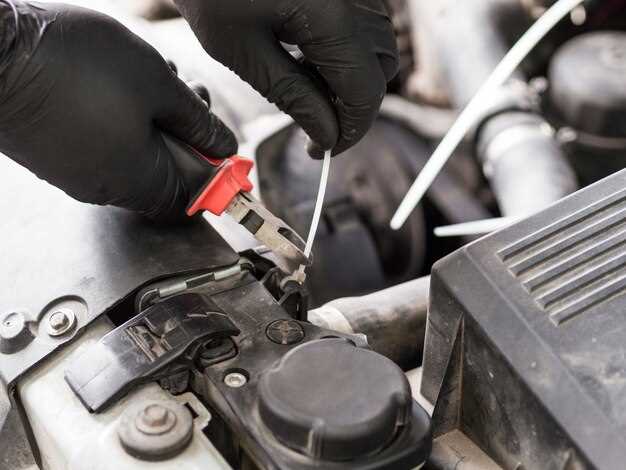
Maintaining your vehicle’s transmission fluid is crucial for the overall health and longevity of your car’s transmission system. Transmission fluid not only lubricates the moving parts within the transmission but also helps in cooling and cleaning the system. Neglecting this important fluid can lead to serious mechanical issues, which may result in costly repairs or even complete transmission failure.
In this guide, we will explore the essential steps to check and replace your transmission fluid. Knowing how to perform this maintenance can empower you as a car owner and ensure your vehicle runs smoothly. We will cover the signs that indicate a fluid change is necessary, the tools you will need, and a step-by-step process to ensure a proper fluid replacement.
Understanding the importance of transmission fluid and its role in your vehicle’s operation cannot be overstated. Regular checks and timely replacements will keep your transmission functioning efficiently and can save you from expensive repairs down the road. Whether you are a seasoned DIY mechanic or a novice, this guide aims to simplify the process and provide the knowledge needed for effective transmission fluid maintenance.
How to Properly Check Your Transmission Fluid Level

Checking your transmission fluid level is an essential maintenance task that can help ensure your vehicle operates smoothly. Follow these steps to perform the check correctly.
First, warm up the engine by running it for a few minutes. This ensures that the fluid circulates, providing an accurate measurement. Once warmed, park the vehicle on a level surface and engage the parking brake.
Next, locate the transmission dipstick, which is usually near the back of the engine bay. Remove the dipstick and wipe it clean with a lint-free cloth or paper towel. This step removes any previous residue that could give a false reading.
Insert the dipstick back into its tube fully, then pull it out again to check the fluid level. The fluid level should be within the marked range on the dipstick, typically indicated by “Full” and “Low” or similar markings. If the fluid is below the “Low” mark, you need to add transmission fluid.
Observe the color and consistency of the fluid as well. Healthy transmission fluid is usually a bright red color and clear. If it appears dark, murky, or has a burnt smell, it may indicate that the fluid needs to be replaced.
If topping up is necessary, use the appropriate transmission fluid type specified in your vehicle’s owner manual. Pour the fluid through the dipstick tube using a funnel to avoid spills, and recheck the level afterward to ensure it falls within the proper range.
Finally, secure the dipstick back in place and close the hood. Regularly checking your transmission fluid can prevent costly repairs and keep your vehicle running efficiently.
Identifying Signs That Your Transmission Fluid Needs Replacement

Monitoring your transmission fluid is essential for maintaining your vehicle’s performance. Recognizing the signs that indicate a need for fluid replacement can prevent more extensive damage and costly repairs. Here are key indicators to watch for:
1. Unusual Shifting Behavior: If you experience delayed or rough shifting, it could signal that your transmission fluid is either low or degraded. Slipping gears or hesitance when changing gears can also be a sign of fluid issues.
2. Overheating: High temperatures can impair the functionality of your transmission. If your vehicle’s temperature gauge frequently rises into the red zone, it may be due to inadequate or contaminated fluid, leading to overheating.
3. Dark or Dirty Fluid Color: Healthy transmission fluid is typically a bright red color and somewhat transparent. If you notice a dark brown or black appearance, it suggests that the fluid is contaminated and requires changing.
4. Burnt Smell: A burnt odor emanating from the transmission area often indicates overheated fluid. This can happen due to age or excessive wear, necessitating a prompt fluid replacement.
5. Fluid Leaks: Puddles or spots of reddish fluid under your vehicle can point to a leak in the transmission system. Addressing leaks promptly is crucial to avoid further damage and maintain optimal fluid levels.
6. Warning Lights: Many modern vehicles are equipped with transmission fluid warning indicators. If you see a light on your dashboard indicating a transmission issue, it’s essential to check the fluid levels and condition as soon as possible.
7. Increased Noise: Grinding or clunking noises while the vehicle is in gear can indicate that your transmission fluid is failing to lubricate the system effectively. This can lead to more severe mechanical problems if not addressed promptly.
Being proactive about your transmission fluid can extend the life of your vehicle and ensure smooth operation. Regular checks and being aware of these signs will help you maintain optimal performance.
Step-by-Step Instructions for Replacing Transmission Fluid
Replacing your transmission fluid is essential for maintaining the health of your vehicle’s transmission. Follow these detailed steps to ensure the process is done correctly.
-
Gather Necessary Tools and Materials:
- New transmission fluid
- Drain pan
- Socket or wrench set
- Funnel
- Shop towels
- Safety gloves
- Safety glasses
-
Prepare the Vehicle:
- Park the vehicle on a level surface.
- Engage the parking brake.
- Place wheel chocks behind the rear wheels for added safety.
-
Access the Transmission Fluid:
- Locate the transmission fluid pan, usually found beneath the vehicle.
- If necessary, raise the vehicle using a jack and secure it with jack stands.
-
Drain the Old Fluid:
- Position the drain pan underneath the transmission pan.
- Using a socket or wrench, remove the bolts securing the transmission pan.
- Carefully lower the pan to allow the old fluid to drain completely into the drain pan.
-
Inspect and Clean the Pan:
- Examine the transmission pan for any debris or metal shavings.
- Wipe the pan with shop towels to remove any residue.
- If equipped, replace the transmission filter according to manufacturer recommendations.
-
Reinstall the Transmission Pan:
- Position the clean transmission pan back onto its mounting surface.
- Secure the pan by tightening the bolts in a crisscross pattern to ensure even sealing.
-
Add New Transmission Fluid:
- Locate the transmission fluid dipstick or fill tube.
- Using a funnel, pour in the new transmission fluid according to the manufacturer’s specifications.
- Check the fluid level with the dipstick and add more fluid if necessary.
-
Check for Leaks:
- Start the vehicle and let it idle for a few minutes.
- Shift through all gears to circulate the new fluid.
- Inspect the area around the transmission pan for any signs of leaks.
-
Dispose of Old Fluid Properly:
- Transfer the old transmission fluid to a sealed container.
- Take it to a recycling center or an auto parts store that accepts hazardous materials.
Following these steps will help ensure a successful transmission fluid replacement, contributing to the optimal performance of your vehicle.




